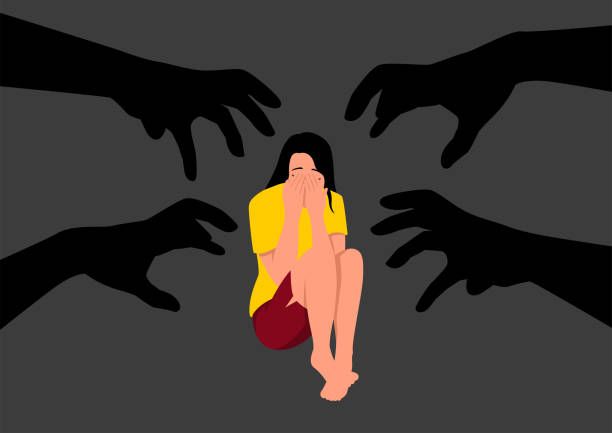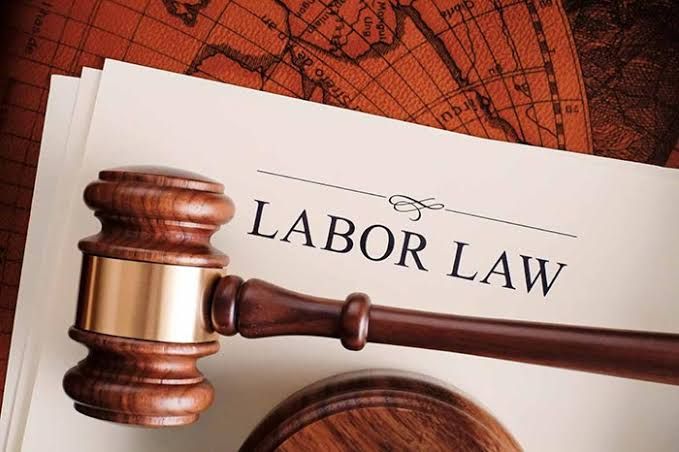AUTHOR: ANSHIKA KUMARI, SHRI RAMSWROOP MEMORIAL UNIVERSITY
TO THE POINT
Date of Incident: December 16, 2012
Victim: 23-year-old physiotherapy intern (named “Nirbhaya” by media, meaning “fearless”)
Crime: Brutal gang rape and assault on a moving private bus in Delhi; the victim was later thrown from the bus.
Accused: 6 individuals (including one juvenile and one who died in custody)
Legal Outcome:
Four adult men sentenced to death (executed on March 20, 2020)
Juvenile sent to a reform home for 3 years (maximum under the Juvenile Justice Act)⸻
Legal Impact
Led to the Criminal Law (Amendment) Act, 2013: expanded definitions of rape, introduced new offenses (e.g., stalking, acid attack), increased punishments.
Formation of the Justice Verma Committee: recommended fast-track courts, police reforms, and better victim protection.
Triggered national and global outrage, catalysing reforms in women’s safety laws in India.
USE OF LEGAL JARGON
Case Summary with Legal Terminology
•Case Title: Mukesh & Anr v. State for NCT of Delhi & Ors, (2017) 6 SCC 1
•Jurisdiction: Delhi, India — Saket Fast Track Court → Delhi High Court → Supreme Court of India
•FIR Registered: Under multiple sections of the Indian Penal Code, 1860:
•Section 302 – Murder
•Section 376(2)(g) – Gang Rape (prior to the 2013 amendment)
•Section 377 – Unnatural offences
•Section 307 – Attempt to murder
•Section 201 – Destruction of evidence
•Section 120B – Criminal conspiracy
•Section 395/397 – Dacoity with attempt to cause death or grievous hurt
Procedural History
•Trial Court (Saket Fast Track Court): Conviction and death sentence to four adult accused
•Delhi High Court: Upheld trial court judgment
•Supreme Court (2017): Final appeal dismissed; confirmed capital punishment
•Curative and Review Petitions: Exhausted under Article 137 (review) and Article 142 (curative jurisdiction)
•Mercy Petitions: Filed under Article 72 and 161 of the Constitution — rejected by President of India
Legal Reforms Prompted
•Criminal Law (Amendment) Act, 2013: Inserted/Amended provisions including:
•Section 354A-D IPC: Sexual harassment, voyeurism, stalking, disrobing
•Introduction of Section 376A-D IPC: For aggravated sexual assaults
•Evidence Law: Strengthened under Indian Evidence Act, 1872 to support survivor testimony
•Juvenile Justice Act Amendment (2015): Allowed juveniles aged 16–18 to be tried as adults in heinous offences
•Justice Verma Committee Report: A non-binding yet widely influential report recommending:
•Repeal of AFSPA in cases of sexual violence
•Gender-sensitization of police and judiciary
•Victim rehabilitation and witness protection mechanisms
Final Disposition
•Execution carried out on 20 March 2020 in Tihar Jail, Delhi
•Juvenile accused (aged 17) detained under Juvenile Justice (Care and Protection) Act, 2000, released after maximum permissible 3-year rehabilitation.
THE PROOF
Key Proofs Presented in the Judgment:
1.CCTV footage tracking the bus route.
2.Victim’s dying declaration recorded by multiple authorities.
3.. DNA profiling, linking semen samples from all six accused to the victim.
4.Recovery of belongings (victim’s and accused’s clothes, iron rod used in assault).
5.Bus driver’s testimony, forensic corroboration.
6.Confessions and testimonies of co-accused under Sec. 164 CrPC.
These collectively formed an overwhelming body of evidence, leading to convictions under charges including rape, murder, kidnapping, unnatural offences, and criminal conspiracy.
ABSTRACT
The Supreme Court of India, in a landmark judgment delivered on May 5, 2017, upheld the death penalty for four convicts involved in the brutal gang rape and murder of a 23-year-old women in Delhi on December 16, 2012. The Court described the crime as one of “unparalleled brutality” and fitting the category of the “rarest of rare cases.”
The verdict is based on a comprehensive analysis of forensic, medical, electronic, and testimonial evidence, including:
•Dying declarations made by the victim to medical and judicial authorities.
•DNA and semen analysis, establishing sexual assault and direct involvement of each accused.
•CCTV footage and call records tracing the movement of the private bus used in the crime.
•Recovery of incriminating objects including iron rods, blood-stained clothes, and personal belongings of the victim.
The Court reaffirmed the importance of women’s right to dignity and bodily integrity, recognizing the deep societal impact of such crimes. It observed that the cruelty and inhumanity demonstrated by the convicts justified the imposition of the maximum punishment under law.
CASE LAWS
1. Machhi Singh v. State of Punjab
Citation: (1983) 3 SCC 470
Principle: Expanded on Bachan Singh by defining five categories of cases that could qualify as “rarest of rare.” Applied to the brutality and societal impact of crimes.
2 Laxman v. State of Maharashtra
Citation: (2002) 6 SCC 710
Principle: Established that a dying declaration can be accepted as the sole basis of conviction if it is truthful and voluntary, even if not recorded by a Magistrate.
3. Khushal Rao v. State of Bombay
Citation: AIR 1958 SC 22
Principle: Held that corroboration is not mandatory if the dying declaration is found to be genuine and credible.
4.State of U.P. v. Krishna Master
Citation: (2010) 12 SCC 324
Principle: Reiterated that forensic and medical evidence can strongly support prosecution even in absence of direct eyewitnesses.
5. C. Muniappan & Ors. v. State of Tamil Nadu
Citation: (2010) 9 SCC 567
Principle: Highlighted the use of circumstantial and scientific evidence in securing conviction in heinous crimes.
6. Ramnaresh v. State of Madhya Pradesh
Citation: (2011) 4 SCC 1
Principle: Balanced aggravating and mitigating circumstances to justify the death penalty in gang rape and murder.
7. Madan Gopal Kakkad v. Naval Dubey & Anr.
Citation: (1992) 3 SCC 204
Principle: Victim’s testimony in sexual assault is given substantial evidentiary value and need not be corroborated if trustworthy.
cases provided the jurisprudential backbone for the Nirbhaya verdict — particularly justifying:
•The death sentence as constitutional,
•The use of dying declarations as primary evidence,
•The reliance on forensic science and digital surveillance in conviction.
CONCLUSION
The Supreme Court of India, in its 2017 judgment, delivered final justice in the infamous Nirbhaya case, which involved the brutal gang rape and murder of a 23-year-old woman in Delhi on December 16, 2012. The Court confirmed the death penalty for four adult accused: Mukesh, Pawan, Vinay, and Akshay, citing the “rarest of rare” doctrine.
FAQS
1. What was the Nirbhaya case?
The Nirbhaya case refers to the brutal gang rape and murder of a 23-year-old paramedical student in Delhi on December 16, 2012. She was assaulted by six men in a moving private bus and later died from her injuries, sparking nationwide protests.
2. Who were the accused in the Nirbhaya case?
•Mukesh Singh
•Pawan Gupta
Vinay Sharma
•Akshay Thakur
•Ram Singh (died by suicide in jail)
•One juvenile (under 18 at the time)
3. What was the final judgment by the Supreme Court?
In 2017, the Supreme Court of India upheld the death penalty for Mukesh, Pawan, Vinay, and Akshay, calling the crime the “rarest of rare.”
4. When were the convicts executed?
The four convicts were hanged on March 20, 2020 at Tihar Jail, after exhausting all legal remedies, including mercy and curative petitions.
5. What happened to the juvenile accused?
The juvenile was tried under the Juvenile Justice Act and sentenced to three years in a reform home. He was released in December 2015, which caused public outrage and led to amendments in the juvenile law.
6. What evidence was used to convict the accused?
•Dying declaration of the victim
•DNA and forensic evidence (semen, blood, fingerprints)
•Survivor’s eyewitness account
•CCTV footage and mobile phone tracking
•Recovery of iron rod, bloodied clothes, and personal belonging
7. Why is it called the “Nirbhaya” case?
“Nirbhaya” means “fearless” in Hindi. It is a pseudonym used to protect the victim’s identity and honor her courage during the legal process.
8. What was the societal impact of the case?
The case ignited one of the largest public protests in Indian history against sexual violence. It led to:
•Legal reforms
•Awareness campaigns
•Creation of fast-track courts
•Women’s safety being prioritized in policy and governance
9. Did the convicts try to avoid the death sentence?
Yes. All four filed review petitions, curative petitions, and mercy pleas before the President of India. All were rejected, paving the way for execution.



